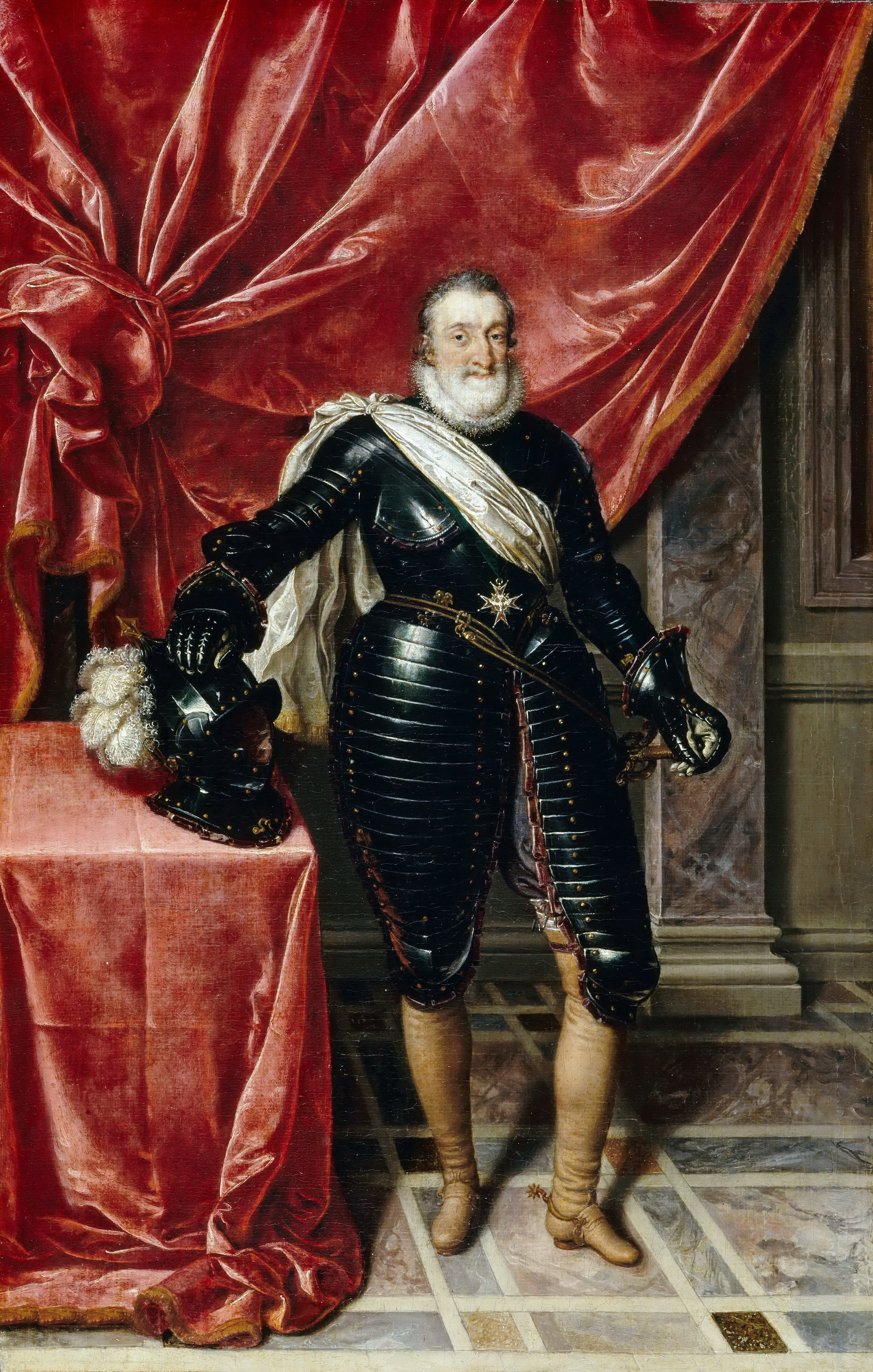| Author |
Message |
|
Luke Johnson
|
 Posted: Fri 12 Nov, 2010 9:31 pm Post subject: your thoughts about armour from a painting Posted: Fri 12 Nov, 2010 9:31 pm Post subject: your thoughts about armour from a painting |
 |
|
The painting is by Anthony van Dyck and entitled Portrait of a Commander in Armour, with a Red Scarf. 
I wanted to know what armour this was, and if anyone would be kind enough to provided some sample pictures of this armour.
Also, do you have any sample pictures or info of the armor in this:
Henry IV of France by Frans Pourbus the younger

|
|
  |
 |
Michael Curl

Location: Northern California, US Joined: 06 Jan 2008
Posts: 487
|
|
   |
 |
|
Joe Pittman
|
 Posted: Sat 13 Nov, 2010 1:02 pm Post subject: The sidearm, Sidesword?? Posted: Sat 13 Nov, 2010 1:02 pm Post subject: The sidearm, Sidesword?? |
 |
|
The sword with jokerhead pommel and floating bear head guard is certainly intetresting. Is the Commander Dutch from Eighty Yrs war?
Long Life
|
|
  |
 |
|
Lafayette C Curtis
|
 Posted: Wed 17 Nov, 2010 6:39 am Post subject: Posted: Wed 17 Nov, 2010 6:39 am Post subject: |
 |
|
|
That first painting is really intriguing. The hairstyle of the subject and the name of the painter suggests a provenance from the early- to mid-17th century, but the armour appears to be a "Maximilian" suit from the early 16th. I'd certainly be interested in whatever information that comes up regarding the circumstances that led to this rather unlikely combination!
|
|
  |
 |
Adam D. Kent-Isaac

|
 Posted: Wed 17 Nov, 2010 11:29 am Post subject: Posted: Wed 17 Nov, 2010 11:29 am Post subject: |
 |
|
Because the title is "Portrait of a Commander in Armour" and not actually the name of a person, I think it may have been just the artistic license of the painter and not a representation of an actual commander of the time period. An official portrait of a real person from that time would have depicted him in the armour that was actually worn at the time.
Pastime With Good Company
|
|
  |
 |
James Anderson III

|
 Posted: Thu 18 Nov, 2010 12:20 pm Post subject: Posted: Thu 18 Nov, 2010 12:20 pm Post subject: |
 |
|
The first does look very Maximilian.
Sable, a chevron between three lions statant Argent
Knight, Order of the Marshal
|
|
    |
 |
|
William Knight
Location: Mid atlantic, US Joined: 02 Oct 2005
Posts: 133
|
 Posted: Thu 18 Nov, 2010 8:59 pm Post subject: Posted: Thu 18 Nov, 2010 8:59 pm Post subject: |
 |
|
|
The exhibit catalogue for 'The Art of Power' exhibit at the National Gallery from last years included a lot of notes about the usage of armour from the armoury by artists long after the armour was no longer in use. You see some of Charles V's/Carlos I's harness in a couple of Baroque paintings, and Carlos II was painted in Phillip II's armour.
|
|
  |
 |
Adam D. Kent-Isaac

|
 Posted: Thu 18 Nov, 2010 10:19 pm Post subject: Posted: Thu 18 Nov, 2010 10:19 pm Post subject: |
 |
|
Yes, when it comes to armour in paintings, all kinds of artistic liberties are taken. The famous "Lion Armour" at the Royal Armouries appears in portraits of many different men, including the Earl of Manchester, the Duke of Albemarle (George Monck) and coins of Charles I and Charles II. A gilded Dutch armour made for a young Charles I was worn in portraits by Charles II, James II, and William I (despite the fact that William in the portrait is an adult and the armour was clearly made for a child.) A Greenwich armour originally made for Christian, Duke of Brunswick appears in portraits of many future dukes of Brunswick and the helmet can even be seen sitting on a table in the background of a 1766 painting of Ferdinand of Brunswick-Wolfenbeuttel.

Pastime With Good Company
|
|
  |
 |
|
Lafayette C Curtis
|
 Posted: Sat 20 Nov, 2010 7:48 pm Post subject: Posted: Sat 20 Nov, 2010 7:48 pm Post subject: |
 |
|
| Adam D. Kent-Isaac wrote: | | Because the title is "Portrait of a Commander in Armour" and not actually the name of a person, I think it may have been just the artistic license of the painter and not a representation of an actual commander of the time period. An official portrait of a real person from that time would have depicted him in the armour that was actually worn at the time. |
Exactly. I've seen this practice quite often in depictions of 18th- and late 17th- century commanders in late 16th- or early 17th-century cuirassier armour, but the first painting in the thread is quite interesting because both the painting and the armour are both much earlier than the examples I'm familiar with. I'm wondering if it shows the early days of the trend.
|
|
  |
 |
|
|

